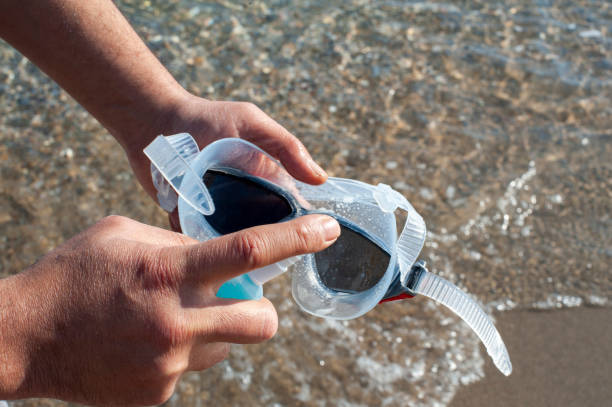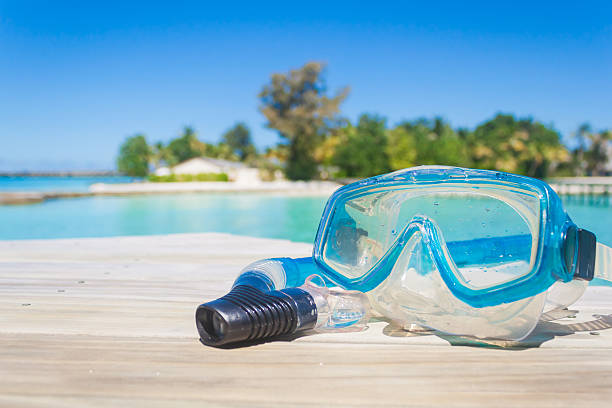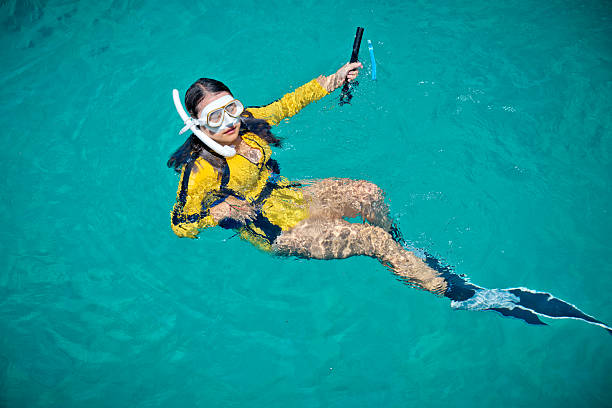Вы когда-нибудь задумывались, что входит в создание вашего любимого купальника? Что ж, вы попали по адресу! Купальники бывают из разных материалов, каждый из которых предназначен для разных нужд и предпочтений. Давайте рассмотрим, из чего сделаны купальники, и узнаем, что делает их такими.

Историческая эволюция материалов для купальных костюмов
Купальники претерпели значительные изменения на протяжении столетий, отражая изменения в общественных нормах, технологиях и материаловедении. Вот более подробный взгляд на то, как развивались материалы для купальных костюмов:
Ранние купальники
В 19 веке купальники были далеки от гладких и функциональных моделей, которые мы видим сегодня. Первые купальники изготавливались из тяжелых материалов, таких как шерсть и хлопок. Эти ткани выбирались из-за их скромности и долговечности, но они были далеки от практичности. Представьте себе, что вы входите в воду в шерстяном платье — неудобно и громоздко, не так ли?
Почему шерсть и хлопок?
- Скромность: В эту эпоху скромность была важной проблемой. Шерсть и хлопок обеспечивали полное покрытие, следуя общественным стандартам приличия.
- Доступность: Эти материалы были легкодоступны и относительно недороги, что делало их доступными для широких слоев населения.
Проблемы:
- Масса: Намокая, шерсть и хлопок становились чрезвычайно тяжелыми, из-за чего плавание превращалось в утомительное занятие.
- Время высыхания: Эти материалы долго сохли, что часто вызывало дискомфорт.
Инновации середины 20 века
Середина XX века ознаменовала собой поворотный период в истории купальных костюмов, обусловленный достижениями в области текстильных технологий и переходом к более любительскому плаванию.
Синтетические ткани:
- Нейлон: Разработанный в 1930-х годах и представленный в купальниках в 1940-х годах, нейлон произвел революцию в купальниках. Он был легким, быстросохнущим и обеспечивал лучшую посадку и комфорт, чем шерсть или хлопок.
- Полиэстер: Еще одно синтетическое чудо, полиэстер, стал популярен в 1950-х и 60-х годах. Он был прочным, устойчивым к усадке и растяжению, хорошо сохранял форму.
Влияние моды и СМИ:
- Расцвет Голливуда и его имидж гламурной пляжной одежды повлияли на общественное восприятие и спрос на стильные купальники.
- Легендарное бикини, появившееся в 1940-х годах, популяризировало тенденцию к более открытым фасонам, что потребовало использования более гибких и облегающих материалов.
Современные ткани
Сегодня купальники — это сочетание стиля, функциональности и технологий. Современные материалы разработаны для улучшения производительности, комфорта и долговечности, удовлетворяя различные виды занятий плаванием и предпочтения.
Продвинутая синтетика:
- Спандекс (лайкра): Известный своей исключительной эластичностью, спандекс часто смешивают с другими тканями, чтобы обеспечить плотное прилегание и превосходную свободу движений.
- ПБТ (полибутилентерефталат): Применяемый в купальных костюмах для соревнований, ПБТ обладает высокой устойчивостью к хлору и выцветанию, обеспечивая прочность и длительный срок службы.
- Неопрен: Неопрен — синтетический каучук, используемый в гидрокостюмах. Он обеспечивает теплоизоляцию и плавучесть, что делает его идеальным для занятий в холодной воде.
Фокус на устойчивом развитии:
- Переработанные материалы: Благодаря растущей осведомленности об охране окружающей среды многие бренды теперь используют переработанный нейлон и полиэстер, изготовленные из выброшенных рыболовных сетей, пластиковых бутылок и обрезков ткани.
- Натуральные волокна: Эксперименты с органическим хлопком, коноплей и другими биоразлагаемыми материалами предлагают экологически чистые альтернативы, хотя они и менее распространены.
Распространенные материалы для купальников

Из чего сделаны купальники? Купальники сегодня изготавливается из различных материалов, каждый из которых обладает собственным набором свойств, которые отвечают различным потребностям и предпочтениям. Давайте подробнее рассмотрим некоторые из наиболее распространенных тканей, используемых в купальниках.
нейлон
Нейлон — синтетический полимер, который стал основным продуктом в производстве купальников. Известный своей прочностью и эластичностью, нейлон предлагает пловцам ряд преимуществ.
Свойства нейлона
- Легкий: Нейлон невероятно легкий, поэтому его удобно носить, не ощущая тяжести.
- Прочный: Эта ткань известна своей прочностью и способностью выдерживать износ, что гарантирует более долгий срок службы вашего купальника.
- Эластичный: Превосходная эластичность нейлона позволяет ему растягиваться и прилегать к телу, обеспечивая плотное прилегание.
- Быстросохнущий: Одной из выдающихся особенностей нейлона является его способность быстро сохнуть, что идеально подходит для занятий плаванием.
Преимущества нейлона
- Комфорт: Гладкая текстура нейлона приятна на ощупь, уменьшая раздражение и натирание.
- Соответствовать: Его эластичность обеспечивает облегающий крой, подчеркивающий силуэт пловца.
- Универсальность: Нейлон подходит как для любительского, так и для спортивного плавания и является универсальным выбором для многих типов купальников.
Полиэстер
Полиэстер — еще один популярный материал для изготовления купальных костюмов, который ценится за свою прочность и устойчивость к воздействию окружающей среды.
Свойства полиэстера
- Устойчив к хлору: Полиэстер хорошо выдерживает воздействие хлора, что делает его предпочтительным выбором для пловцов в бассейне.
- Устойчив к УФ-излучению: Эта ткань обеспечивает превосходную защиту от ультрафиолетовых лучей, предотвращая выцветание цвета и деградацию ткани.
- Прочный: Полиэстер известен своей прочностью и упругостью, что обеспечивает его долговечность.
Преимущества полиэстера
- Продолжительность жизни: Купальники из полиэстера с меньшей вероятностью потеряют свою форму или эластичность со временем, что обеспечивает более длительный срок службы.
- Низкие эксплуатационные расходы: Полиэстер прост в уходе и обслуживании, выдерживает многократные стирки без существенного износа.
- Экологически чистые варианты: Переработанный полиэстер, изготовленный из использованных пластиковых бутылок, представляет собой экологичную альтернативу с такими же прекрасными свойствами.
Спандекс (лайкра)
Спандекс, также известный под торговой маркой Lycra, — это синтетическое волокно, известное своей исключительной эластичностью.
Свойства спандекса
- Высокоэластичный: Спандекс может растягиваться в пять раз по сравнению с первоначальной длиной и возвращаться к своей первоначальной форме, обеспечивая непревзойденную гибкость.
- Гладкий и мягкий: Эта ткань приятна на ощупь, обеспечивает комфорт и снижает трение кожи.
- Легкий: Несмотря на свою эластичность, спандекс легкий и не добавляет объем купальнику.
Преимущества спандекса
- Свобода передвижения: Эластичность спандекса обеспечивает полную свободу движений, что делает его идеальным для активных пловцов и профессиональных спортсменов.
- Удобная посадка: Ткань плотно прилегает к телу, обеспечивая удобную и надежную посадку.
- Улучшенный дизайн: Спандекс часто смешивают с другими материалами, что улучшает общие характеристики и посадку купальника.
Специальные ткани для купальников
Помимо этих распространенных материалов существуют специальные ткани, разработанные с учетом конкретных потребностей и предпочтений.
ПБТ (полибутилентерефталат)
- Устойчив к хлору: ПБТ обладает высокой устойчивостью к хлору, что делает его идеальным для регулярного использования в бассейне.
- Сохранение формы: Эта ткань сохраняет свою форму и эластичность с течением времени даже при частом воздействии хлорированной воды.
- Быстросохнущий: ПБТ быстро высыхает, обеспечивая дополнительный комфорт и удобство для пловцов.
Неопрен
- Теплоизоляция: Неопрен — это синтетический каучук, который обеспечивает отличную теплоизоляцию, что делает его идеальным для гидрокостюмов и занятий спортом в холодной воде.
- Плавучесть: Эта ткань обеспечивает плавучесть, помогая пловцам легче удерживаться на плаву в воде.
- Прочность: Неопрен очень прочен и устойчив к воздействию воды и солнечного света.
Ткани, устойчивые к хлору
- Повышенная прочность: Эти ткани специально разработаны для защиты от разрушающего воздействия хлора, что продлевает срок службы купальника.
- Сохранение цвета: Ткани, устойчивые к хлору, дольше сохраняют свой цвет и внешний вид даже при частом воздействии хлорированной воды.
Экологичные материалы для купальников

По мере роста осведомленности об экологических проблемах резко возрос спрос на устойчивые купальники. Бренды все чаще обращаются к экологически чистым материалам, чтобы уменьшить свое воздействие на окружающую среду. Давайте погрузимся в мир устойчивых материалов для купальников и узнаем, как они производят фурор в индустрии моды.
Переработанный нейлон
Переработанный нейлон — это фантастический вариант для устойчивых купальников. Этот материал создается из отходов до потребления, таких как обрезки ткани, и отходов после потребления, таких как выброшенные рыболовные сети и ковры.
Свойства переработанного нейлона
- Прочность: Сохраняет прочность и упругость чистого нейлона.
- Мягкость: Обеспечивает ощущение гладкости и комфорта на коже.
- Гибкость: Сохраняет отличную эластичность, обеспечивая плотное прилегание и подчеркивание фигуры.
Преимущества переработанного нейлона
- Воздействие на окружающую среду: Сокращение отходов за счет повторного использования материалов, которые в противном случае оказались бы на свалках или в океанах.
- Эффективность использования ресурсов: Для производства требуется меньше ресурсов и энергии по сравнению с первичным нейлоном.
- Производительность: Обладает такими же высокими эксплуатационными характеристиками, что и традиционный нейлон, что делает его надежным выбором для купальных костюмов.
Переработанный полиэстер
Переработанный полиэстер — еще один популярный устойчивый материал для купальников. Он производится из переработанных пластиковых бутылок, что снижает загрязнение пластиком и способствует круговой экономике.
Свойства переработанного полиэстера
- Сила: Сохраняет прочность и долговечность первичного полиэстера.
- Устойчивость к УФ-излучению: Обеспечивает отличную устойчивость к ультрафиолетовому излучению, предотвращая выцветание цвета и деградацию ткани.
- Устойчивость к хлору: Устойчив к разрушительному воздействию хлора, что делает его идеальным для плавания в бассейне.
Преимущества переработанного полиэстера
- Экологичность: Снижает спрос на первичный полиэстер и уменьшает количество пластиковых отходов в окружающей среде.
- Энергоэффективность: Производство переработанного полиэстера требует меньше энергии по сравнению с производством нового полиэстера из нефти.
- Долгоиграющий: Сохраняет форму и внешний вид с течением времени, являясь прочным и долговечным вариантом для купальников.
Натуральные волокна
Хотя это и не так распространено, некоторые бренды купальников экспериментируют с натуральными волокнами, чтобы создать экологически чистые альтернативы синтетическим материалам.
Органический хлопок
- Биоразлагаемый: Органический хлопок полностью биоразлагаем, что снижает его воздействие на окружающую среду.
- Мягкость: Обеспечивает мягкость и комфорт, хотя может не обеспечивать тех же эксплуатационных характеристик, что и синтетические материалы.
Конопля
- Устойчивость: Конопля — высокоустойчивая культура, требующая минимального количества воды и пестицидов.
- Сила: Волокна конопли прочные и долговечные, что делает их пригодными для изготовления купальных костюмов.
- Устойчивость к УФ-излучению: Обеспечивает естественную устойчивость к ультрафиолетовому излучению, защищая от солнца.
Преимущества натуральных волокон
- Воздействие на окружающую среду: Натуральные волокна биоразлагаемы и оказывают меньшее воздействие на окружающую среду по сравнению с синтетическими материалами.
- Комфорт: Натуральные волокна, такие как органический хлопок и конопля, обеспечивают комфорт и воздухопроницаемость купальников.
- Экологически осознанный выбор: Выбор купальников из натуральных волокон способствует развитию устойчивых методов ведения сельского хозяйства и снижает зависимость от синтетических материалов.
Эконил
Econyl — это регенерированная нейлоновая ткань, изготовленная из переработанных отходов, включая выброшенные рыболовные сети, обрезки ткани и промышленный пластик. Это популярный выбор для брендов купальников, заботящихся об экологии.
Свойства Эконила
- Прочность: Обладает такой же прочностью, как и чистый нейлон.
- Эластичность: Обеспечивает отличную растяжку и восстановление, гарантируя комфортную посадку.
- Мягкость: Мягкий и гладкий на ощупь, как традиционный нейлон.
Преимущества Эконила
- Сокращение отходов: Помогает сократить количество отходов в океанах и на свалках за счет повторного использования выброшенных материалов.
- Производительность: Обладает высокими эксплуатационными характеристиками, что делает его пригодным как для повседневных, так и для спортивных купальников.
- Устойчивость: Поддерживает экономику замкнутого цикла, превращая отходы в ценные ресурсы.
Инновационные экологически чистые материалы
Помимо переработанных и натуральных волокон, некоторые бренды изучают инновационные материалы для создания экологичных купальников.
Ткани на основе водорослей
- Возобновляемые ресурсы: Водоросли — это возобновляемый ресурс, который можно выращивать устойчивым образом.
- Экологичное производство: Производство тканей на основе водорослей оказывает меньшее воздействие на окружающую среду по сравнению с традиционными материалами.
- Производительность: Обладает уникальными свойствами, такими как антимикробные свойства и защита от ультрафиолета.
Биоразлагаемые полимеры
- Экологичность: Эти полимеры легче разлагаются в окружающей среде по сравнению с традиционными пластиками.
- Прочность: Разработан для обеспечения необходимой прочности и производительности купальников, при этом являясь экологически безопасным.
Как выбрать правильную ткань? Несколько факторов, которые следует учитывать

Идеальная ткань для купальников может существенно повлиять на комфорт, производительность и долговечность. Вот руководство, которое поможет вам выбрать правильную ткань на основе нескольких ключевых факторов.
Уровень активности и цель
Вид плавания, которым вы будете заниматься, играет решающую роль в выборе наиболее подходящей ткани.
- Для любительского плавания такие ткани, как нейлон или полиэстер, идеально подходят благодаря своему комфорту, прочности и быстрому высыханию. Эти ткани обеспечивают хороший баланс гибкости и поддержки, что делает их идеальными для повседневного плавания или отдыха у бассейна.
- С другой стороны, профессиональным пловцам нужны материалы, обеспечивающие высокие результаты, такие как ПБТ или спандекс, которые обладают превосходной растяжимостью и устойчивостью к хлору, обеспечивая неограниченную свободу движений и долговечность во время интенсивных тренировок.
- Для пляжных развлечений комфорт и гибкость имеют первостепенное значение. Нейлон или спандекс являются отличным выбором, поскольку они обеспечивают плотное прилегание и широкий диапазон движений, что идеально подходит для таких занятий, как пляжный волейбол или просто принятие солнечных ванн.
- Если вы увлекаетесь водными видами спорта, такими как серфинг или дайвинг, неопрен необходим. Этот синтетический каучук обеспечивает отличную теплоизоляцию и плавучесть, гарантируя, что вы останетесь в тепле в холодной воде и получите необходимую подъемную силу для ваших водных приключений.
Посадка и комфорт
Комфорт имеет первостепенное значение при выборе купальника. Выбранная вами ткань должна быть приятной на ощупь и соответствовать форме вашего тела. Спандекс, известный своей исключительной эластичностью, обеспечивает плотное и гибкое прилегание, которое адаптируется к вашим движениям, что делает его отличным выбором для активных пловцов и спортсменов. Нейлон также обеспечивает хорошую эластичность, гарантируя удобный и облегающий купальник, который не будет стеснять движений.
Мягкость ткани — еще один важный фактор. Нейлон и переработанный нейлон известны своей гладкой текстурой, которая нежна на коже и снижает риск раздражения, что делает их популярным выбором для купальников. Хотя органический хлопок встречается реже, он может обеспечить мягкость и естественность, предлагая комфорт без ущерба для экологической ответственности. Примеряя купальники, обратите внимание на то, как ткань ощущается на ощупь и насколько хорошо она прилегает к вашему телу, обеспечивая максимальный комфорт и уверенность в воде.
Прочность и долговечность
Купальники должны выдерживать суровые условия регулярного использования, а также воздействие хлора, соленой воды и солнца. Полиэстер и PBT являются отличным выбором из-за их высокой устойчивости к хлору, что делает их пригодными для частого использования в бассейне без ухудшения свойств. Эта прочность особенно важна для профессиональных пловцов, которые проводят много времени в хлорированной воде. Полиэстер, в частности, также обеспечивает отличную защиту от ультрафиолета, предотвращая выцветание цвета и деградацию ткани под воздействием солнечного света. Натуральные волокна, такие как конопля, также обеспечивают определенный уровень устойчивости к ультрафиолету, что повышает их долговечность в солнечной среде.
Для регулярного износа полиэстер и нейлон являются надежным выбором из-за их прочной природы. Эти материалы могут выдерживать физические нагрузки во время плавания и других водных видов спорта, гарантируя, что ваш купальник останется в хорошем состоянии в течение более длительного периода. Инвестирование в прочные ткани не только повышает ваши результаты, но и гарантирует, что вы получите максимум от своего купальника, уменьшая необходимость в частой замене.
Воздействие на окружающую среду
Если для вас приоритетом является устойчивость, рассмотрите экологически чистые варианты, которые уменьшают вред окружающей среде. Переработанные материалы, такие как переработанный нейлон и переработанный полиэстер, производятся из повторно используемых отходов, таких как выброшенные рыболовные сети и пластиковые бутылки. Эти ткани обладают теми же преимуществами в производительности, что и их чистые аналоги, при этом значительно сокращая отходы и способствуя круговой экономике. Выбор переработанных материалов помогает уменьшить воздействие на окружающую среду производства купальников и поддерживает использование существующих ресурсов.
Натуральные волокна, такие как органический хлопок и конопля, биоразлагаемы и оказывают меньшее воздействие на окружающую среду по сравнению с синтетическими материалами. Органический хлопок производится без вредных пестицидов и химикатов, что делает его экологически чистым выбором для купальников. Конопля, известная своей устойчивостью, требует минимального количества воды и пестицидов для выращивания, что делает ее очень экологически сознательным вариантом. Кроме того, инновационные материалы, такие как Econyl и ткани на основе водорослей, предлагают устойчивые альтернативы за счет переработки отходов и использования возобновляемых ресурсов, расширяя границы экологически чистых купальников.
Уход и обслуживание
Правильный уход может продлить срок службы вашего купальника, поэтому важно выбирать ткани, за которыми легко ухаживать, и следовать инструкциям по уходу. Например, нейлон и спандекс следует стирать вручную с мягким моющим средством, чтобы сохранить их эластичность и предотвратить повреждение. Избегайте сильного выжимания, а вместо этого разложите их на горизонтальной поверхности для сушки, что поможет сохранить их форму и посадку. С другой стороны, полиэстер часто выдерживает машинную стирку, но всегда лучше проверять этикетку по уходу за конкретными инструкциями, чтобы избежать каких-либо неудач.
Быстросохнущие ткани, такие как нейлон и полиэстер, добавляют удобства, поскольку они снижают риск появления плесени и неприятных запахов. После купания прополощите купальник в холодной воде, чтобы удалить хлор, соль и другие остатки, затем высушите его в тени, чтобы предотвратить повреждение ткани солнцем. Избегайте использования высоких температурных режимов при сушке купальников, так как это может повредить волокна и сократить срок службы купальника. При правильном уходе ваш купальник может оставаться ярким, удобным и долговечным в течение многих сезонов.
Эстетические предпочтения
Внешний вид и ощущение ткани также могут повлиять на ваш выбор. При выборе купальников учитывайте дизайн, текстуру и доступные варианты цвета. Нейлон и спандекс часто имеют гладкий, блестящий вид, который добавляет нотку гламура вашему купальнику, выделяя вас на пляже или у бассейна. Полиэстер, напротив, может иметь матовую отделку, предлагая более сдержанную и классическую эстетику.
Что касается цвета и узоров, полиэстер исключительно хорошо удерживает краску, обеспечивая яркие цвета, которые сохраняются. Это делает его отличным вариантом для тех, кто любит смелые, яркие купальники. Смеси спандекса позволяют использовать широкий спектр узоров и принтов, предоставляя вам свободу выбора дизайна, отражающего ваш стиль. Предпочитаете ли вы минималистский вид или привлекающие внимание дизайны, есть ткань, которая может удовлетворить ваши эстетические предпочтения, обеспечивая при этом необходимую вам функциональность.
Заключение
Ткани для купальников прошли долгий путь, предлагая сочетание комфорта, долговечности и стиля. Независимо от того, являетесь ли вы профессиональным пловцом, обычным любителем пляжного отдыха или кем-то средним, понимание различных материалов может помочь вам сделать осознанный выбор. Так что в следующий раз, когда вы наденете свой купальник, вы будете точно знать, что делает его таким особенным.
Часто задаваемые вопросы
В1: Какой материал лучше всего подходит для купальников?
Лучший материал для купальников — это смесь нейлона и спандекса. Эта комбинация обеспечивает отличную прочность, эластичность и комфорт, что делает ее идеальной как для любительского, так и для спортивного плавания. Она обеспечивает плотное прилегание, быстросохнущую способность и устойчивость к хлору и ультрафиолетовым лучам.
В2: Как продлить срок службы купальника?
Чтобы ваш купальник прослужил дольше, прополощите его в холодной воде сразу после использования, чтобы удалить остатки хлора, соли и других веществ. Стирайте вручную с мягким моющим средством и не выжимайте. Сушите в расправленном виде в тени, избегая попадания прямых солнечных лучей и высокой температуры.
В3: Являются ли экологичные материалы для купальников такими же качественными, как и традиционные?
Да, устойчивые материалы для купальников, такие как переработанный нейлон и полиэстер, так же хороши, как и традиционные. Они обеспечивают схожую прочность, эластичность и комфорт, одновременно снижая воздействие на окружающую среду. Достижения в области текстильных технологий гарантируют, что экологически чистые ткани соответствуют стандартам производительности, требуемым как для любительских, так и для соревновательных купальников.
В4: В чем разница между спандексом и лайкрой?
Спандекс и лайкра относятся к одному и тому же типу синтетического волокна, известного своей исключительной эластичностью. «Спандекс» — это общее название, используемое в Соединенных Штатах, в то время как «Лайкра» — это торговая марка, принадлежащая Invista, компании, производящей волокна спандекса. Оба термина часто используются взаимозаменяемо в контексте эластичных тканей.
В5: Могут ли ткани купальников вызывать аллергию?
Да, ткани для купальников могут вызывать аллергию у некоторых людей. Аллергические реакции могут быть вызваны определенными материалами или химикатами, используемыми в процессе производства, такими как красители, латекс или эластан. Если у вас чувствительная кожа или вы страдаете аллергией, ищите купальники из гипоаллергенных материалов, таких как органический хлопок или определенные типы нейлона и полиэстера, которые маркированы как благоприятные для кожи.



